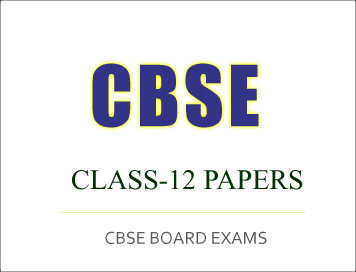CBSE Class-12 Question Papers for IOP/Comptt Examination 2017 : Delhi Scheme, Economics
Disclaimer: This website is NOT associated with CBSE, for official website of CBSE visit - www.cbse.gov.in

CBSE Class-12 Question Papers for IOP/Comptt Examination 2017 :
Delhi Scheme, Economics
CBSE Class-12 Question Papers for IOP/Comptt Examination 2017 : Economics, Set -1
ECONOMICS
Time allowed : 3 hours
Maximum Marks : 100
General Instructions :
(i) All questions in both sections are compulsory.
(ii) Marks for questions are indicated against each question.
(iii) Questions number 1 – 5 and 16 – 20 are very short answer questions carrying 1 mark each. They are required to be answered in one sentence.
(iv) Questions number 6 – 8 and 21 – 23 are short answer questions carrying 3 marks each. Answers to them should not normally exceed 60 words each.
(v) Questions number 9 – 11 and 24 – 26 are also short answer questions carrying 4 marks each. Answers to them should not normally exceed 70 words each.
(vi) Questions number 12 – 15 and 27 – 30 are long answer questions carrying 6 marks each. Answers to them should not normally exceed 100 words each.
(vii) Answers should be brief and to the point and the above word limit be adhered to as far as possible.
Section – A
1. When is a good considered an inferior good ?
2. Average revenue equals : (Choose the correct alternative)
(A) Total revenue divided by the quantity produced.
(B) Price
(C) Both (A) and (B)
(D) None of the above
3. Define production function.
4. A perfectly competitive firm faces : (Choose the correct alternative)
(A) Constant price
(B) Constant average revenue
(C) Constant marginal revenue
(D) All the above
5. Under which form of market a firm is called price taker ?
6. Distinguish between positive economics and normative economics. Give an example of each.
OR
Distinguish between micro-economics and macro-economics. Give an example of each.
7. Why does a production possibility curve slope downwards from left to right ? Explain.
8. When price of a good rises by 20 percent its demand falls by 40 percent. Calculate its price elasticity of demand.
9. Explain any two causes of ‘increase in supply’ of a commodity.